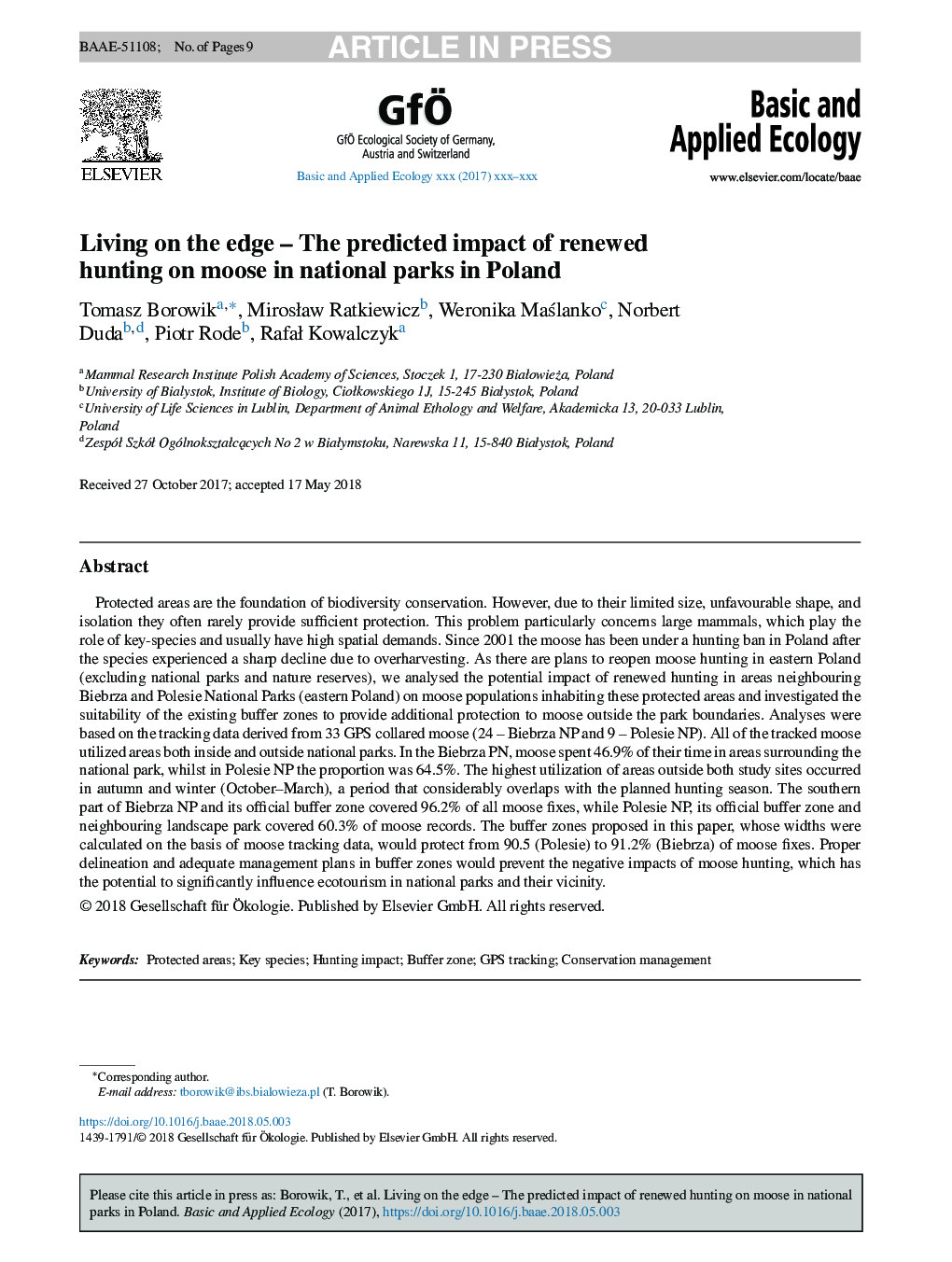| Article ID | Journal | Published Year | Pages | File Type |
|---|---|---|---|---|
| 8846990 | Basic and Applied Ecology | 2018 | 9 Pages |
Abstract
Protected areas are the foundation of biodiversity conservation. However, due to their limited size, unfavourable shape, and isolation they often rarely provide sufficient protection. This problem particularly concerns large mammals, which play the role of key-species and usually have high spatial demands. Since 2001 the moose has been under a hunting ban in Poland after the species experienced a sharp decline due to overharvesting. As there are plans to reopen moose hunting in eastern Poland (excluding national parks and nature reserves), we analysed the potential impact of renewed hunting in areas neighbouring Biebrza and Polesie National Parks (eastern Poland) on moose populations inhabiting these protected areas and investigated the suitability of the existing buffer zones to provide additional protection to moose outside the park boundaries. Analyses were based on the tracking data derived from 33 GPS collared moose (24 - Biebrza NP and 9 - Polesie NP). All of the tracked moose utilized areas both inside and outside national parks. In the Biebrza PN, moose spent 46.9% of their time in areas surrounding the national park, whilst in Polesie NP the proportion was 64.5%. The highest utilization of areas outside both study sites occurred in autumn and winter (October-March), a period that considerably overlaps with the planned hunting season. The southern part of Biebrza NP and its official buffer zone covered 96.2% of all moose fixes, while Polesie NP, its official buffer zone and neighbouring landscape park covered 60.3% of moose records. The buffer zones proposed in this paper, whose widths were calculated on the basis of moose tracking data, would protect from 90.5 (Polesie) to 91.2% (Biebrza) of moose fixes. Proper delineation and adequate management plans in buffer zones would prevent the negative impacts of moose hunting, which has the potential to significantly influence ecotourism in national parks and their vicinity.
Related Topics
Life Sciences
Agricultural and Biological Sciences
Animal Science and Zoology
Authors
Tomasz Borowik, MirosÅaw Ratkiewicz, Weronika MaÅlanko, Norbert Duda, Piotr Rode, RafaÅ Kowalczyk,
